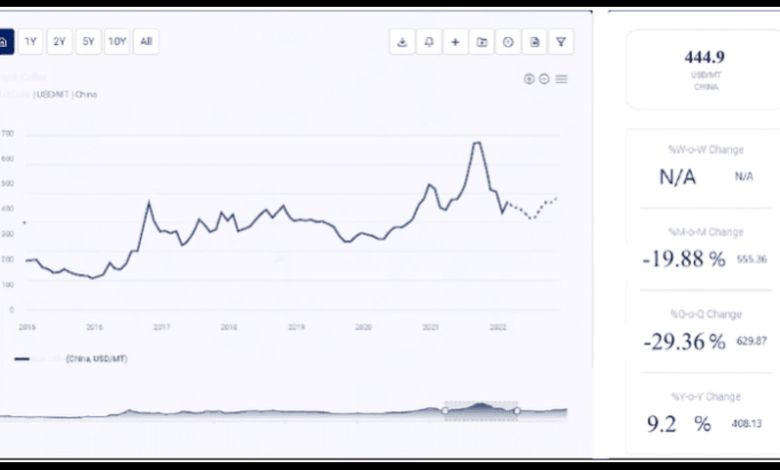Price Trend of Rapeseed Analysis: Market Dynamics and Future Outlook

Rapeseed, also known as canola in its low erucic acid form, is a significant agricultural commodity used for oil extraction and animal feed. It is also used in biodiesel production, making it an essential crop in various industries. Understanding the price trends of rapeseed is crucial for farmers, traders, processors, and end-users to make informed decisions. This article provides a comprehensive analysis of rapeseed prices, examining the factors influencing these trends, regional variations, and future market forecasts.
Market Overview
Rapeseed is primarily grown in regions with temperate climates, including Europe, Canada, China, and India. The global market for rapeseed is influenced by several factors, including weather conditions, agricultural practices, demand from various sectors, and global trade policies.
Enquire For Regular Prices: https://www.procurementresource.com/resource-center/rapeseed-price-trends/pricerequest
Current Rapeseed Price Trends
As of mid-2024, the price of rapeseed has shown variability due to various market dynamics. The average global price of rapeseed ranges between $400 and $600 per metric ton. Several key factors contribute to these price trends:
- Weather Conditions: Weather plays a significant role in rapeseed production. Favorable weather conditions can lead to abundant harvests and lower prices, while adverse weather conditions such as droughts or floods can reduce supply and drive prices up.
- Agricultural Practices: The adoption of improved agricultural practices and high-yielding seed varieties can influence rapeseed production and prices. Regions with advanced farming techniques typically have more stable and potentially lower prices.
- Supply and Demand Dynamics: The balance between supply and demand plays a crucial role in determining prices. High demand from the food processing and biodiesel industries, coupled with limited supply, can drive prices up, while an oversupply can lead to price reductions.
- Global Trade Policies: Trade policies, including tariffs and import/export restrictions, can significantly affect the price of rapeseed. Changes in trade agreements or geopolitical tensions can disrupt supply chains, leading to price volatility.
- Biodiesel Production: The demand for rapeseed oil in biodiesel production influences the price of rapeseed. High demand for biodiesel can lead to increased prices for rapeseed.
Regional Price Variations
The price of rapeseed varies across different regions due to local production capacities, demand levels, and regulatory environments. Here is a regional analysis of rapeseed prices:
- North America: In the United States and Canada, rapeseed prices range from $420 to $580 per metric ton. Prices are influenced by weather conditions, agricultural practices, and demand from the food and biodiesel industries.
- Europe: In Europe, the price of rapeseed varies between $400 and $600 per metric ton. The region’s demand for rapeseed oil and biodiesel, as well as local production capacities, contribute to these prices. Countries like Germany, France, and the UK are significant markets for rapeseed.
- Asia-Pacific: The Asia-Pacific region, led by China and India, is a significant market for rapeseed. Prices in this region range from $400 to $580 per metric ton. Growing industrialization and increasing demand for rapeseed oil in cooking and biodiesel drive the market. Production costs are generally lower due to less stringent regulations and lower labor costs.
- Latin America: In Latin America, the price of rapeseed ranges from $410 to $570 per metric ton. The region’s growing agricultural sector and increasing demand for biodiesel are key factors influencing prices. Local production capacities also play a role in determining pricing.
- Middle East and Africa: Prices in the Middle East and Africa vary between $420 and $590 per metric ton. The region’s developing food processing sector and increasing demand for cooking oil and biodiesel contribute to the market dynamics. Import dependencies in some countries can also lead to price fluctuations.
Factors Influencing Rapeseed Prices
Several factors play a crucial role in determining the prices of rapeseed:
- Weather and Climate Conditions: Weather and climate conditions significantly affect rapeseed production. Favorable weather can lead to good harvests and stable prices, while adverse conditions can reduce supply and increase prices.
- Agricultural Practices and Inputs: The use of high-yield seed varieties, modern farming techniques, and adequate use of fertilizers and pesticides can enhance production and influence prices. Regions with advanced agricultural practices generally have more stable prices.
- Demand-Supply Dynamics: The balance between demand and supply in the market influences prices. High demand from the food processing and biodiesel industries and limited supply can drive prices up, while an oversupply can lead to price reductions.
- Global Trade Policies: Trade policies, including tariffs, export bans, and import restrictions, can impact rapeseed prices. Changes in trade agreements or geopolitical tensions can disrupt supply chains and lead to price volatility.
- Market Demand: The demand for rapeseed from various industries, such as food processing, biodiesel production, and animal feed, impacts market dynamics. High demand can lead to increased prices, while low demand can have the opposite effect.
- Economic Conditions: Global and regional economic conditions influence the demand for rapeseed. Economic downturns can lead to reduced demand and lower prices, while economic growth can drive demand and increase prices.
Applications of Rapeseed
Understanding the diverse applications of rapeseed can provide insights into the factors driving its demand and, consequently, its price. Some of the primary applications include:
- Food and Cooking Oil: Rapeseed is used to produce canola oil, which is a popular cooking oil due to its health benefits. The demand from the food industry significantly drives the market.
- Biodiesel Production: Rapeseed oil is a key feedstock for biodiesel production. The demand for biodiesel impacts the price of rapeseed.
- Animal Feed: Rapeseed meal, a by-product of oil extraction, is used as a high-protein animal feed. The demand from the livestock industry influences market dynamics.
- Industrial Uses: Rapeseed oil is used in the production of lubricants, soaps, and cosmetics. The demand from the industrial sector impacts the market.
Future Price Forecast
The future outlook for rapeseed prices is influenced by various factors, including market demand, agricultural practices, technological advancements, and regulatory changes. Here are some key trends and predictions for the future:
- Stable Agricultural Practices: If agricultural practices continue to improve, leading to higher yields and more stable production, it is likely that the price of rapeseed will stabilize. However, any significant changes in agricultural practices or weather conditions could impact prices.
- Growing Demand from End-Use Industries: The demand for rapeseed from various industries, such as food processing, biodiesel production, and animal feed, is expected to continue growing. This increasing demand will likely support price stability or even lead to price increases.
- Technological Innovations: Advances in agricultural technology and practices could drive market growth. Innovations that enhance production efficiency or create new market opportunities may help stabilize or reduce prices.
- Environmental and Regulatory Factors: Stricter environmental regulations and sustainability initiatives may impact production processes and costs. Compliance with these regulations could lead to increased production costs, potentially driving prices up.
- Economic Recovery: The global economic recovery from the COVID-19 pandemic is expected to boost demand for food products and biodiesel containing rapeseed. This increased demand may support higher prices in the short to medium term.
- Regional Market Dynamics: Regional differences in production capacity, demand, and regulatory environments will continue to influence rapeseed prices. Markets with strong demand and limited supply may experience higher prices, while regions with surplus production capacity may see more stable or lower prices.
Conclusion
The rapeseed market is influenced by a complex interplay of factors, including weather conditions, agricultural practices, demand from end-use industries, regulatory changes, and economic conditions. As of mid-2024, the average global price of rapeseed ranges between $400 and $600 per metric ton, with regional variations.
Looking ahead, the future price of rapeseed is expected to be shaped by stable agricultural practices, growing demand from various industries, technological innovations, and regulatory factors. Businesses involved in the production, distribution, or utilization of rapeseed should closely monitor these trends to make informed decisions and optimize their operations.
In summary, while the rapeseed market faces several challenges and uncertainties, it also presents opportunities for growth and innovation. By understanding the key factors influencing prices and staying abreast of market developments, businesses can navigate the dynamic landscape and achieve long-term success.




